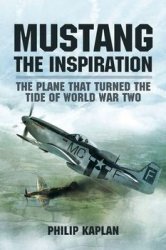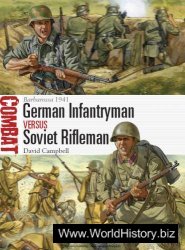Erwin Rommel, courageous soldier and gifted leader of men, became known as the Desert Fox thanks to his cunning in North Africa.
The son of a teacher, Rommel joined the army from his home town of Wurtlemberg as an officer cadet and proved his early promise during World War I. Between the wars he taught at Germany's military academies and authored a book about infantry strategies which was published in 1937.
When war broke out, Colonel Rommel was put in charge of the troops guarding Hitler. Frustrated with his behind-the-lines role, he seized the opportunity early in 1940 to command the 7th Panzer Division which he took into action in France betore it was occupied, striking as far north as the Channel coast.
A year later he was put in charge of the German troops sent by Hitler to bail out the beleaguered Italians in North Africa. He shone in his new role, despite his misgivings about his wavering Italian allies. His impressive early victories won him the rank of field-marshal.
He was held in high esteem by his men for his initiative and bravery. In an example of his charismatic leadership, he once leapt from a car to address a division of men: ‘There is an English Armoured Brigade getting ready to attack you from the north and in the south there is an English mixed force which is advancing. Take care that you are finished with the first before the second arrives!’
Yet he was all but ready to pull out his exhausted men when Hitler ordered a strike on Cairo in Egypt. Once again, he found remarkable success until his supply lines became hopelessly overstretched as he ventured further into British-held territory. Weakened by lack of essentials and wearied by months of fighting, he was finally defeated and pursued out of Africa.
In 1944 Rommel was ordered by Hitler to secure the French coastline against Allied invasion. Even though he was already convinced the war was unwinnable, he tackled the unenviable task with a deep profes- _
Sional pride. Yet he received little practical support from the Fuhrer despite his warnings that all would be lost if the enemy penetrated the insubstantial coastal defences.
Although at heart he was non-political. Rommel was recruited by plotters who wanted Hitler replaced. The popular and realistic Rommel was their chosen leader. It is unlikely, however, that he knew about plans to assassinate the Fuhrer for he was deeply opposed to killing for political ends.
In any event, an attack by British bombers put Rommel in hospital with serious injuries when the abortive coup took place. Hitler himself was reluctant to expose Rommel as part of the plot against him. He knew only too well that he was vulnerable to the grass-roots affection won by Rommel. So he dispatched two generals to see his reluctant adversary to offer a deal. Rommel and his family would escape the shame of public exposure if he would take poison and eliminate himself as a threat to Hitler. On 14 October 1944 Rommel did as his leader asked and was buried with lull military honours.
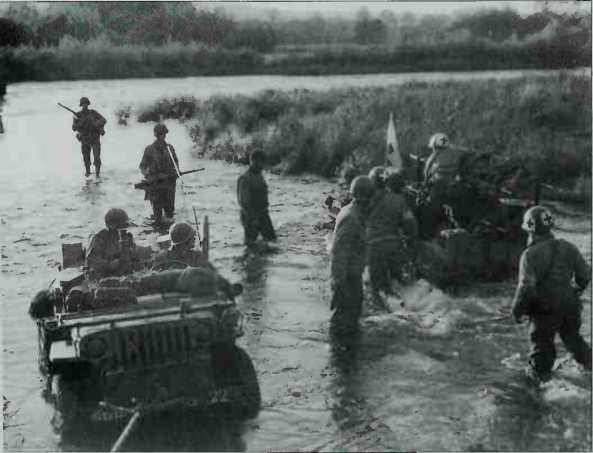
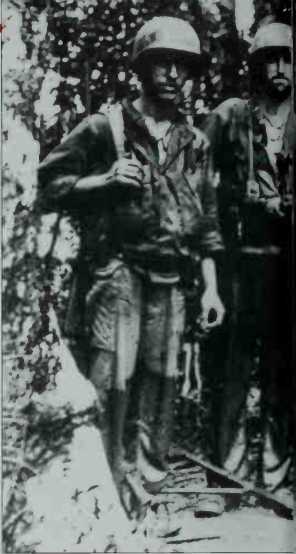
Explode the hidden mines without causing damage to the tank or its crew and could beat a path up a beach for soldiers to follow.
Another anti-mine device was the ‘Plough’, a harrow attached to a tank which would uproot mines before
When SS troops captured the crew of a Crocodile, they would shoot them
They could do any damage. The ‘Ark’, a tank with four long beams at each corner, became a bridge to span small ravines and enable troops and armoured cars to cross.
Providing a roadway for troops and vehicles through soft ground became the job of the ‘Bobbin’ tank. It had a large, rolled, heavy-duty canvas roadway attached to its front. As the tank trundled along, it unfurled the roadway for following traffic. But perhaps the most fearsome of his designs was the ‘Crocodile’, another modified Churchill tank, this time designed to throw a scorching flame for 120 yards. Attached behind was its own fuel depot on wheels. Its effect on the enemy was instant. So feared was this flame-thrower that when SS troops captured the crew of a Crocodile, they would shoot them straightaway. Inappropriately, the stable of inventions was called ‘Hobart’s Funnies’ - although they offered little to the enemy to smile about.
These were not the only technological advances that assisted the Allies. In just four years, the advances in gun capabilities had been enormous. When the war started, the Allied stock of rifles dated mostly from the previous world war or before. Bolt-action guns like this were slow and cumbersome to carry and use.
Now rifles were smaller and lighter than ever before and fired faster too. Rates of fire were up in
Machine guns as well. The British Bren could now dispense an astonishing 500 rounds a minute, the same as the US Browning. New mortars were light enough for infantrymen to carry with them into battle.
But just as these assisted the battle in one respect, they were a hindrance in another. The pack of equipment loaded onto the back of the infantryman was heavier than ever. Soldiers had to rely on good, old-fashioned mules in some cases to transport the guns to the top of high, hostile escarpments in rugged terrain.
Even then the pre-prepared defences installed by the enemy were strong enough to resist the firepower of such weapons. Only bombs would have a sufficiently devastating effect and that called for air support.
Left: Versatile Jeeps were put through their paces in Normandy during the autumn of 1944. Medics even used these rugged, four-wheel-drive vehicles to transport the wounded.
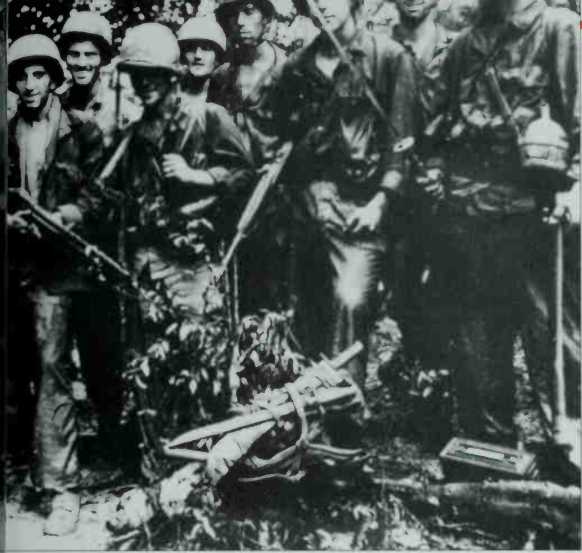
Given the firepower, the men made use of it, expending thousands of rounds of ammunition a day. The prospect of ammunition shortage, not to mention shortage of fuel for
Tanks and food for men, was a daunting one. As all armies discovered during World War II, a fighting force was only as good as its supply line.
In Burma the Chindits had an
Left; Allied soldiers in Burma used newer, more powerful weapons to get the better of their enemy.
Advantage over their Japanese enemy through the regular supplies dropped in by aircraft. In Europe and Africa, improving methods of amphibious landings allowed the trucks which were being turned out by the thousand in America to reach the battle fronts and replenish the men.
Transport had to be reliable and tough to be of any use. In 1940, the Jeep made its debut, its name derived from the full name first given it - general purpose (i. e. ‘GP’) vehicle. First constructed by the Willys Overland Company, this legendary creation had speed and agility and was an instant hit with the army. It could tackle even the roughest terrain and was useful for transporting troops, small arms and other light loads. It further helped to make horses redundant on the battlefield.




 World History
World History
